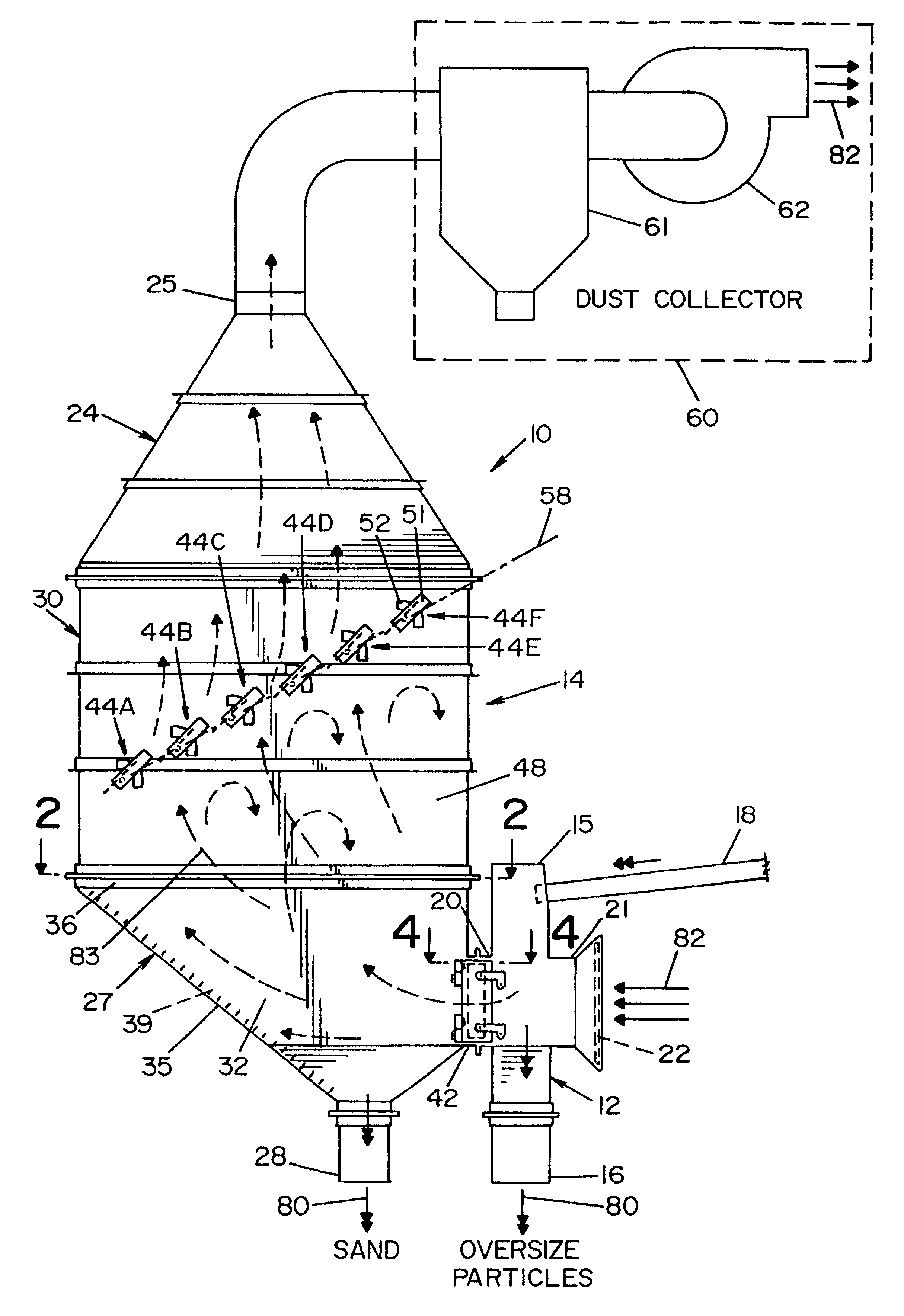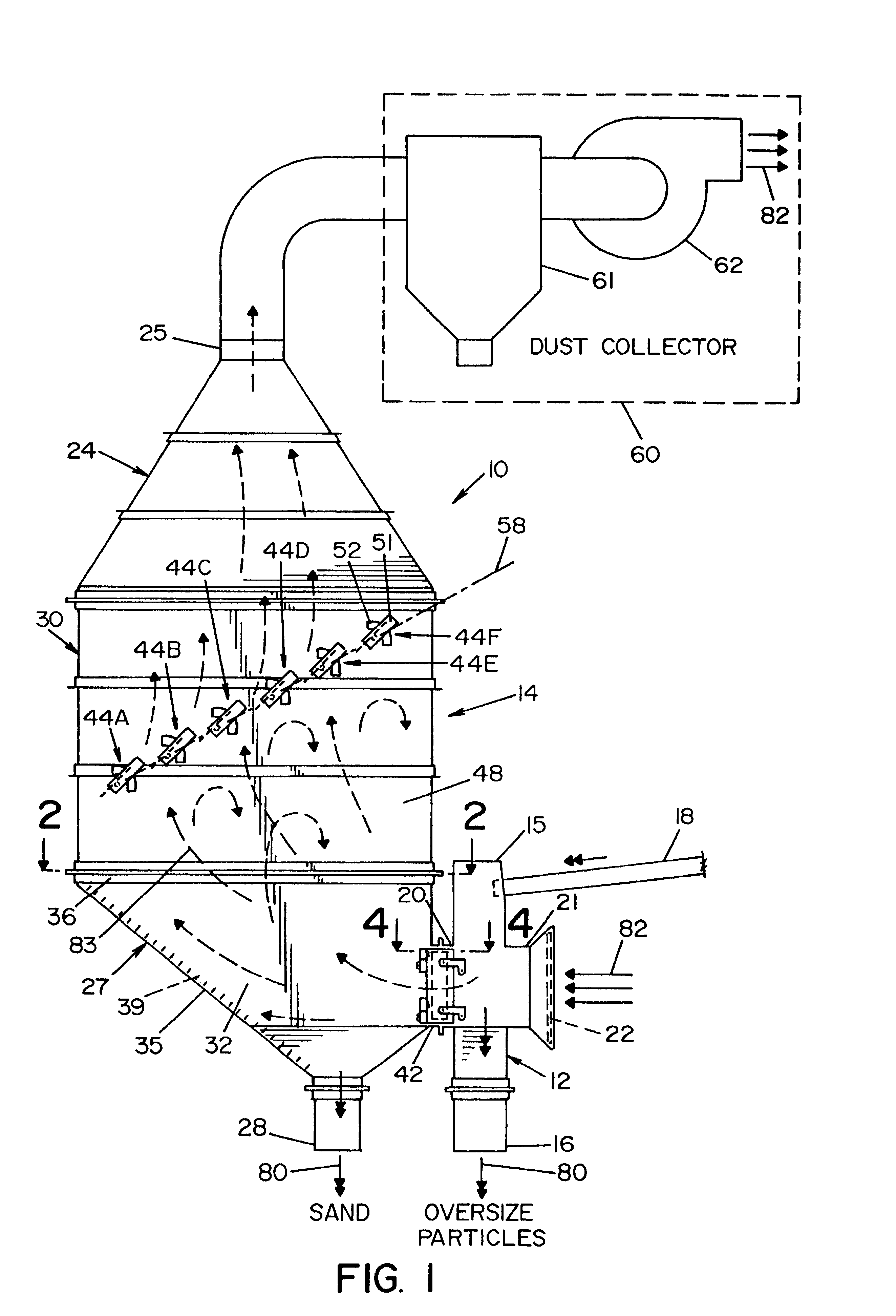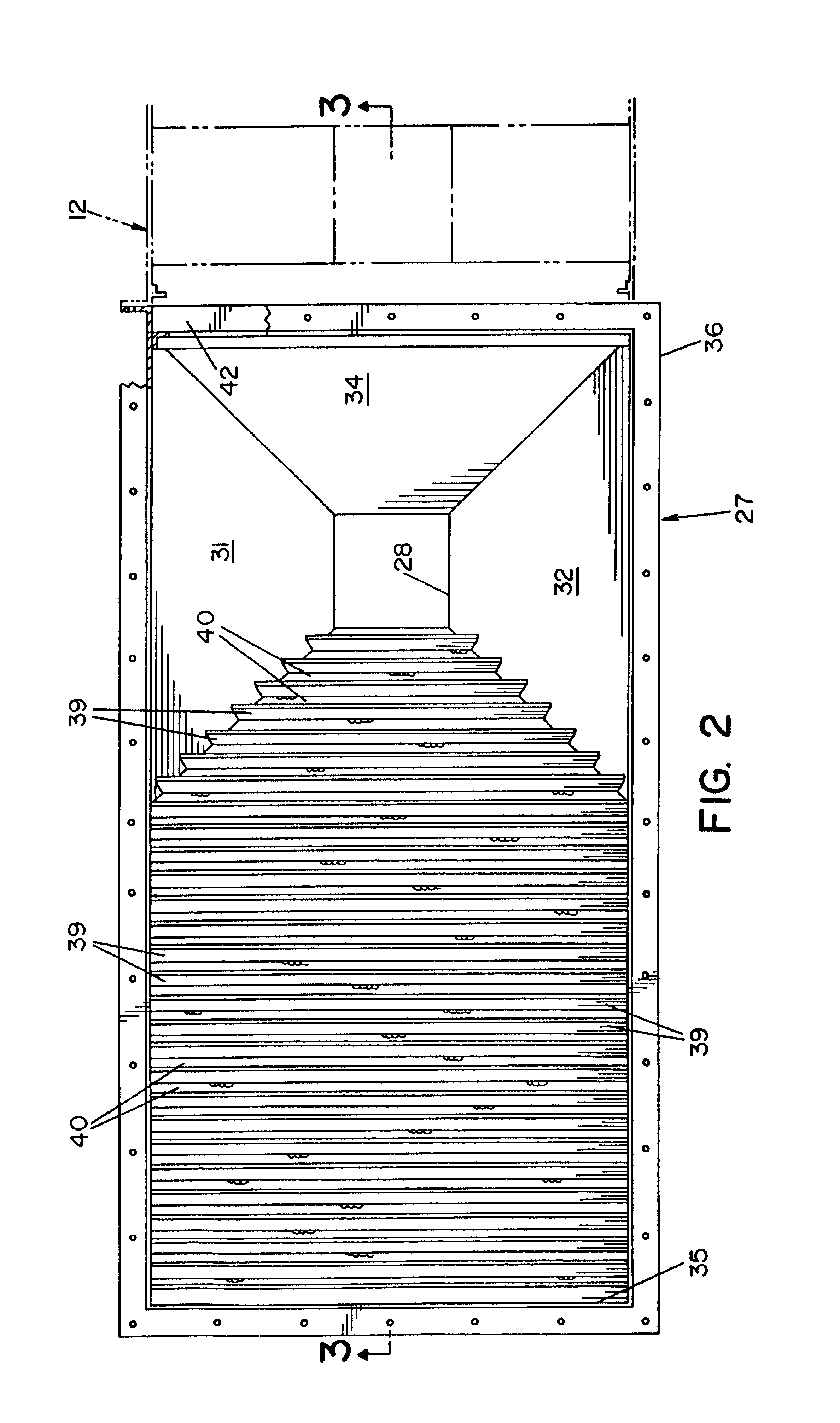Static two stage air classifier
a technology of air classifier and particle size, which is applied in the direction of gas current separation, solid separation, agriculture tools and machines, etc., can solve the problems of difficult control of horizontal air tunnel classifiers, invariably having moving parts or mechanisms which are prone to failure or suspect failure, and all such classifying devices have the potential for failur
- Summary
- Abstract
- Description
- Claims
- Application Information
AI Technical Summary
Benefits of technology
Problems solved by technology
Method used
Image
Examples
Embodiment Construction
[0035]Referring now to the drawings wherein the showings are for the purpose of illustrating a preferred embodiment of the invention only and not for the purpose of limiting the same, there is shown in FIG. 1 an air classifier 10 of the invention.
[0036]In the preferred embodiment, air classifier 10 separates by size or “classifies” a granular mixture substantially comprising silica sand particles. For consistency in terminology only and when used in the specifications hereof to define the invention, “granular mixture” will refer to a substance comprising a plurality of discrete “particles” having various sizes and shapes even though technically there may be no difference between a “granule” and a “particle”. The granular mixture is homogeneous in the sense that all the particles are substantially of the same material (technically, the same density) albeit different size. At noted above, granular mixtures comprising particles of the same material other than silicon sand can be separa...
PUM
 Login to View More
Login to View More Abstract
Description
Claims
Application Information
 Login to View More
Login to View More - R&D
- Intellectual Property
- Life Sciences
- Materials
- Tech Scout
- Unparalleled Data Quality
- Higher Quality Content
- 60% Fewer Hallucinations
Browse by: Latest US Patents, China's latest patents, Technical Efficacy Thesaurus, Application Domain, Technology Topic, Popular Technical Reports.
© 2025 PatSnap. All rights reserved.Legal|Privacy policy|Modern Slavery Act Transparency Statement|Sitemap|About US| Contact US: help@patsnap.com



